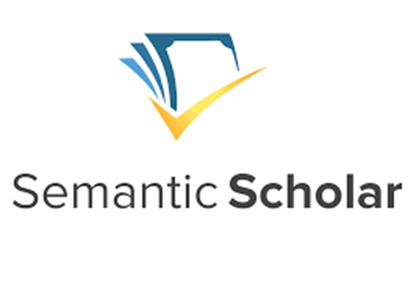Reduction in PAPR-BER of MIMO System using Hybrid Companding and DCT Technique
Keywords:
PTS, DCT, COMPANDING, MIMO-OFDM, PAPR, BERAbstract
One of the major drawback of OFDM system is relatively high Peak-to-Average Power Ratio (PAPR), which tends to reduce the power efficiency of the Radio Frequency Amplifier. In order to minimize the PAPR ratio this thesis focuses on PAPR reduction techniques. Extensive investigation of different PAPR reduction techniques has been made. Based on the survey it is found Selective Mapping (SLM) is the most widely used PAPR reduction technique. It is distortion less, efficient, offers better BER performance and can be implemented for any number of sub-carriers. One of the disadvantage is high computational complexity. In this paper hybrid discrete cosine transform (DCT) and companding, for two antennas MIMO-OFDM system, is proposed which can achieve better PAPR performance at much less bit error rate (BER). Simulation results show that the proposed approach can reduce BER and achieve a better PAPR reduction compared to previous technique.
References
Ebubekir Memisoglu, Ahmet Enes Durnanay and Hüseyin Arslan, “Numerology Scheduling for PAPR Reduction in Mixed Numerologies”, IEEE Wireless Communications Letters, Vol. 10, No. 6, June 2021.
H. Chen, J. Hua, J. Wen, K. Zhou, J. Li, D. Wang, and X. You, “Uplink interference analysis of F-OFDM systems under non-ideal synchronization,” IEEE Trans. Veh. Technol., vol. 69, no. 12, pp. 15500–15517, Dec. 2020.
S. Rajasekaran, M. Wangeshabbasani, M. Farsi, H. Yandemoorph, and H. Saeedi, “Resource allocation-based PAPR analysis in uplink SCMA-OFDM systems,” IEEE Access, vol. 7, pp. 162803–162817, 2019.
Z. Zhou, L. Wang, and C. Hu, “Low-complexity PTS scheme for improving PAPR performance of OFDM systems,” IEEE Access, vol. 7, pp. 131986–131994, 2019.
W. Hu, “SLM-based CO-OFDM VLC system with low-complexity minimum amplitude difference scheme,” Electron. Lett., Vol. 54, no. 3, pp. 141–146, 2018.
T.-W. Hun and H. Ochiai, “A new uplink multicarrier NOMA-based OFDM with low PAPR, low latency, and high reliability,” IEEE Trans. Commun., vol. 66, no. 5, pp. 1996–2008, May 2018.
Ashna Kacker, Sai Nitesh Garsha, Ojasvi Jain and Kritika, “Improvisation in BER and PAPR by using hybrid reduction techniques in MIMO-OFDM employing channel estimation techniques,” 7th International Advance Computing Conference, IEEE 2017.
Cho-Lung Hung, Yung-Fa Huang, Ching-Chuan and Rung-Ching Chen, “Performance of PTS-Based Firefly Algorithm Scheme for PAPR Reduction in SFBC MIMO-OFDM Communication Systems”, International Symposium on Computer, Consumer and Control, IEEE 2017.
D. Kokil and R. Prabhu M.E., “PAPR Reduction in MIMO OFDM Using Adaptive SLM Scheme”, International Journal for Research in Applied Science & Engineering Technology (IJRASET), Vol. 03, No. 05, pp. 729–735, May 2015.
Jasmin Murti Nvari Seymen, Ketan Nsayam, “Channel estimation based on neural network in space time block coded MIMO-OFDM system”, Digital Signal Processing, Vol. 23, No.1, pp. 275–280, Jan. 2013.
P. Muthulnachi and D. Pananjayarn, “PAPR Reduction based on a Modified PTS with Iterative and Pulse Shaping method for STBC MIMO-OFDM System”, IEEE ICCCNT, 26th–28th July 2012, Coimbatore, India.
L. Yang, K. Soo, J. Ji and Y. M. Siu, “PAPR Reduction Using Low Complexity PTS to Construct OFDM Signals Without Side Information”, IEEE Transactions on Broadcasting, Vol. 57, No. 2, pp. 4532–4539, June 2011.
Anusree Neggal and Abijith Mitra, “MAP Estimation of Coding and Scrambling for a Convolutionally Coded OFDM System”, National Conference on Communications (NCC), pp. 01–05, IEEE 2011.
Chia-Hao Lee, Liang Wang and Shun-Sheng Wang and Hsiao-Ling Chang, “A Low-Complexity SLM Based PAPR Reduction Scheme for SFBC MIMO-OFDM Systems”, 978-1-61284-251-7/11 IEEE 2011.
J. Li, W. Wang, X. and Guo, L.W., “The Research on the Performance of Iterative KALMAN Channel Estimation in MIMO-OFDM System”, Journal of Hebei University of Science and Technology, Vol. 31, No. 6, pp. 550–552, Dec. 2010.
Downloads
How to Cite
Issue
Section
License

This work is licensed under a Creative Commons Attribution-NonCommercial 4.0 International License.




